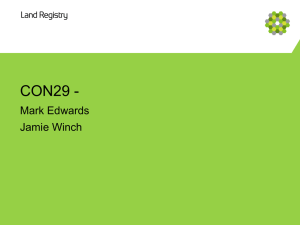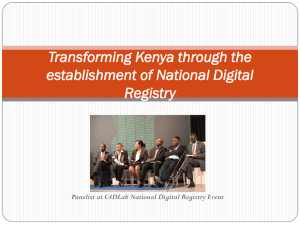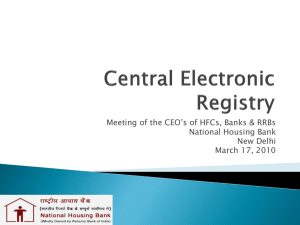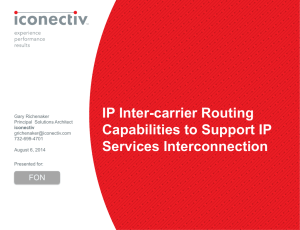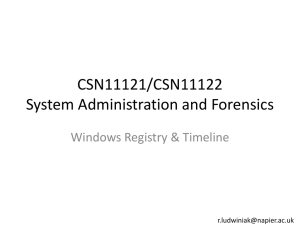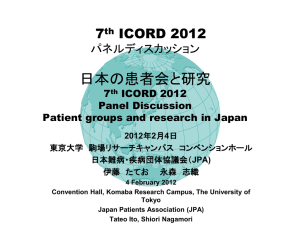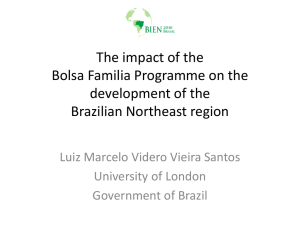ipc374
advertisement
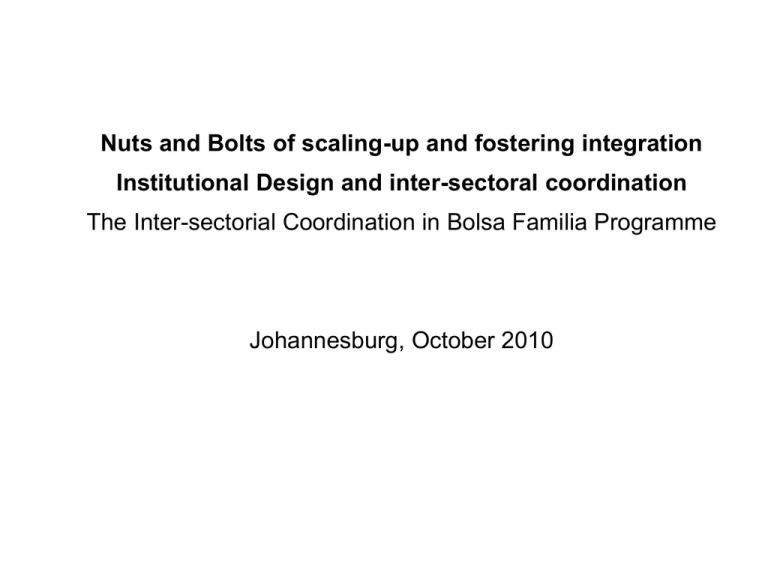
Nuts and Bolts of scaling-up and fostering integration Institutional Design and inter-sectoral coordination The Inter-sectorial Coordination in Bolsa Familia Programme Johannesburg, October 2010 Bolsa Familia´s design The Bolsa Familia Programme is a conditional cash transfer policy, with direct benefit payments to the families. Its institutional framework is directly influenced by: the constitutional decentralization of the Brazilian State and the different roles of central and local governments; and the inter-sectorial approach of the cash transfer policy. It means the BFP´s design emerged as: vertically co-operative; and horizontally coordinated. Coordination Processes at Bolsa Familia The coordination process needs to happen: at the federal government level: it is mandatory according to BFP regulations. The Ministries of Health and Education and the National Secretariat of Social Assistance are responsible for consolidating conditionalities compliance information and reporting them to the Ministry of Social Development; There are coordination processes not related to the conditionalities; they derive from the use of the Single Registry by other policies; is incentive-led at state and municipal levels (financial support). Officials of the different sectors need to work together to offer solutions to vulnerable families at the local level Coordination Processes at Bolsa Familia Policy tools for the articulation of programmes: The Single Registry (TSEE, concursos públicos, Luz para Todos); Other policies´ IT systems alongside with the Single Registry (Presença, SISVAN); the conditionalities themselves (conditionalities are not only a responsability of the beneficiary families) Institutional mechanisms for the coordination of programmes: none (not the case anymore); Regulations and agreements (change of database); Working groups (in the last case) Some challenges Though mandatory in one case and fostered in other ones, coordination does not happen “naturally”. The coordination needs to be build every single day, because: Institutions and work processes do not operate on cooperative logic (other incentive structures influence them) Routines of inter-sectoral coordination do not exist, or are built on an ad hoc basis; Information systems most of times were designed and built to single policies To the moment, coordination mostly occurs bilaterally Some lessons Coordination of policies enhance each other´s success possibilities; Sometimes, the coordination process is not a choice, it derives from a policy institutional framework; Unequivocal leadership decision is needed; Clear definition of roles: what must each institution deliver? It that can be jointly built; Each institution´s policy must be respected as autonomous; Each institution must realize the advantages of the coordination process; Some lessons IT systems have to be able to change data; Inter-institutional spaces need to have an agenda, otherwise are time-consuming and useless; Coordination is not a matter for managers; many teams at the institution must be enrolled; Each partner has to know the other´s attributions and process. Acompanhamento da freqüência escolar – Crianças de 6 a 15 anos - Brasil - (% de acompanhamento) Acompanhamento da saúde– Famílias Acompanhadas Brasil - (% de acompanhamento) Education IT Solution http://frequenciaescolarpbf.mec.gov.br Health IT System http://bolsafamilia.datasus.gov.br Single Registry: main features The Single Registry (Cadastro Único) is an IT system aimed at registering the characteristics of the Brazilian low-income families (individuals and households); It is used to gather and update information so that social policies can select beneficiaries and manage their benefits; The Single Registry provides the Bolsa Familia Programme with its essential information; on the other side, its operation reflects the institutional framework of the cash transfer policy; Single Registry: data flow (until late 2010) At the municipality, families with monthly per capita income up to ½ minimum wage (US$ 141.67) are registered; Data enters through an off-line software; standard answers to the form and local duplicity and cross-reference checks are applied; The data are sent, via internet, to CAIXA; national duplicity is checked; Number of Social Identification is (NSI) attributed by CAIXA; A batch file returns to the municipality; warnings and data request must be observed. Objectives of the Single Registry To enable the unification of the social registries in the same levels and among the government levels (federal, state and municipal); To enable and stimulate the convergence of efforts among the federation levels, aiming at the priority/focused attention to families in situation of greater social vulnerability; To be used as a tool for planning, guiding the implementation of public policies directed to the low-income families; To enable the acknowledgement of the various poverty and vulnerability dimensions, beyond the monetary income; To help build a social protection system, which will be able to articulate the existing policies. The database of the Single Registry The Single Registry Database is composed of two sets of data: 1 – Identification of the household and the family Family address; Household characteristics (infrastructure, access to public services and family composition); Monthly expenses; Link to social programs 2 – Identification of the family members Personal data and civil documentation; School attendance and qualification; Situation in the labor market; Income. Some lessons Role definition of the managing and operating institutions must be as clear as possible; Clear definition of scope, concepts and variables standardization of response options are also required; and The more policies using the system, the better; Much of the success of the Single Registry derives of the institutional design of Bolsa Familia Programme; however, policymakers now look for the registry because it has proven to be a effective tool in gathering and updating information, as well as to be functional; Capacitation of the interviewers is a key point to the accuracy of data collection, and hence for its functionality; Some challenges Reaching the families to enroll them and to update their data; Preventing the contamination of the registry operation by local political dynamics; clientelism is an actual threat; Getting the relevant information for many policies (usability of the system); Convince policy-makers not to build other registry systems, but to use yours (corporative reasons); Obrigado! Thank You! bruno.camara@mds.gov.br www.mds.gov.br +55-61-3433-3618

